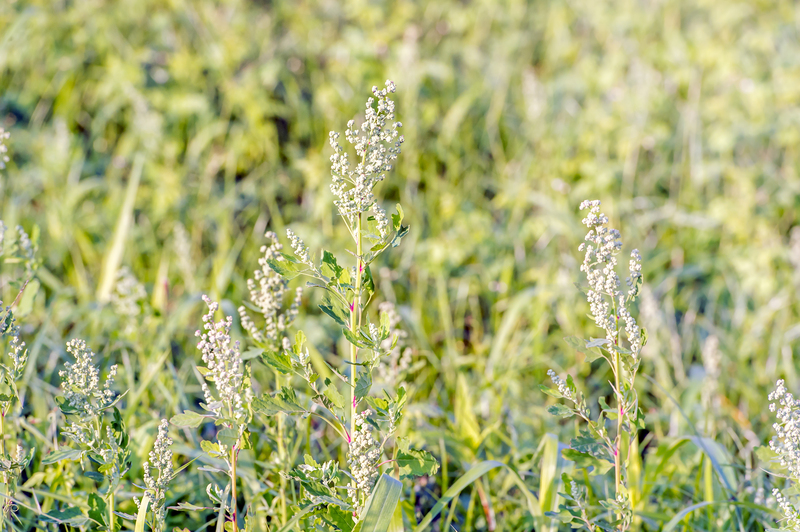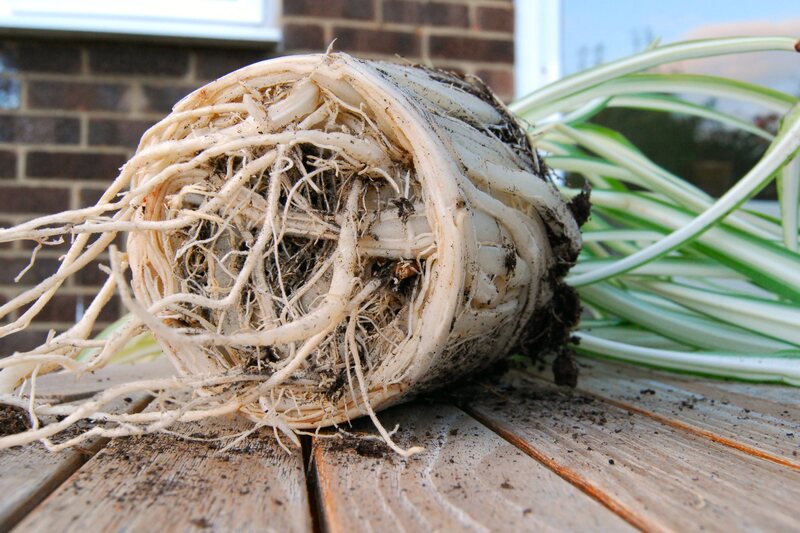Maximizing Space with Vertical Gardening
Posted on 13/09/2025
Maximizing Space with Vertical Gardening: The Ultimate Guide
Vertical gardening is a revolutionary way to bring nature closer to your home or office, especially when space is limited. More than just a trend, maximizing space with vertical gardening offers a practical solution for urban dwellers, apartment residents, and homeowners alike. Whether you have a compact balcony, a tiny backyard, or walls you wish to transform into green art, vertical gardens can radically enhance your living environment.
Why Choose Vertical Gardening?
Gardening enthusiasts and eco-friendly city dwellers often face the challenge of managing limited ground space. Vertical gardening is the answer. By utilizing vertical spaces - such as walls, fences, trellises, or specially designed structures - you can grow a lush garden even in the smallest of spaces.
- Efficient space utilization: Make the most out of unused wall space or corners.
- Improved aesthetics: Vertical gardens serve as stunning green decor pieces.
- Better air quality: Plants filter the air, providing oxygen and reducing toxins indoors and outdoors.
- Reduced pest and disease exposure: Elevating your plants often deters ground pests and promotes healthier growth.
- Thermal insulation: Green walls can help regulate building temperatures, reducing energy costs.

Understanding the Basics: What is Vertical Gardening?
Vertical gardening involves growing plants upwards rather than outwards. It can be as simple as a series of wall-mounted pots or as extensive as a living wall or vertical farm. This technique is not just about saving space -- it enables creative expression and brings lush beauty to even the most urban environments.
Types of Vertical Gardens
- Living walls: Also known as green walls, these are large panels covered with living plants.
- Treillis and lattice gardens: Climbing plants like ivy or beans grow upwards with the help of supportive structures.
- Modular vertical planters: Stacked pots, pockets, or shoe organizers that can be filled with soil and various plants.
- Pallet gardens: Upcycled wood pallets fitted with landscape fabric and filled with plants - perfect for DIYers.
- Hydroponic systems: Innovative systems using water-based nutrient solutions instead of soil, suitable for indoor vertical gardens.
Planning Your Vertical Garden to Maximize Space
Strategic planning is key when starting a vertical garden. Here's how to make the most of your limited area:
1. Assess Your Location
- Sunlight: Evaluate how much sunlight your chosen wall or space receives throughout the day.
- Support and accessibility: Ensure the structure can bear the weight of soil, water, and mature plants, and is easy to access for maintenance.
- Water availability: Choose a location near a water source or plan for efficient irrigation.
2. Choose the Right Plants
Selecting the appropriate vertical garden plants is crucial. Opt for species that thrive in your climate and match the light conditions of your site.
- Foliage plants: Ferns, pothos, philodendrons, and ivy for lush greenery.
- Edible plants: Herbs like basil, mint, or parsley; vegetables such as lettuce, spinach, and cherry tomatoes.
- Flowering plants: Petunias, nasturtiums, or pansies for splashes of color.
- Succulents and cacti: Low-maintenance and ideal for sunny, dry conditions.
3. Selecting the Framework
- Pocket panels: Felt or fabric panels with pockets for planting.
- Wooden or metal trellises: Excellent for vining crops.
- Stackable planters: Ideal for patios or balconies.
- DIY pallet frames: Creative, customizable, and budget-friendly.
Creative Vertical Gardening Ideas for Small Spaces
Innovative solutions can help you maximize limited garden space and turn even the smallest area into a lush retreat. Here are some inspiring ideas:
- Hanging Pocket Organizers: Use fabric shoe racks as planters on fences or walls.
- Tower Planters: Stack pots to create a vertical herb or flower garden.
- Upcycled Ladders: Lean an old ladder against a wall and use each rung as a plant shelf.
- Mason Jar Walls: Secure jars to a wood panel for an eye-catching herb or succulent display.
- Living picture frames: Create artful arrangements of succulents or mosses framed like artwork.
The Benefits of Vertical Gardening in Urban Settings
Urban vertical gardening provides myriad benefits beyond maximizing space:
- Enhances privacy: Green walls act as natural privacy barriers on balconies or terraces.
- Reduces urban heat: Plants absorb sunlight, cooling urban environments.
- Improves biodiversity: Attracts birds, bees, and beneficial insects to city landscapes.
- Mitigates noise pollution: Dense plantings can absorb and reduce city noise.
- Boosts well-being: Studies show that being close to greenery improves mental health and productivity.
Installation: Step-by-Step Approach to Vertical Gardening
Ready to start maximizing your space with a vertical garden? Follow these steps:
Step 1: Choose Your Location
Pick a sturdy wall, balcony, or fence. Make sure it can withstand moisture and the weight of your planned garden.
Step 2: Install a Support Structure
- Secure panels or frameworks to the wall using weather-resistant fixings.
- Ensure safety by confirming all elements are firmly attached before adding soil and plants.
Step 3: Prepare Soil or Growing Medium
If you're using containers or pockets, fill them with high-quality potting soil. Choose a medium with good drainage to prevent root rot, particularly important in densely planted vertical gardens.
Step 4: Plant Selection and Placement
- Tall or vining plants go at the top.
- Medium-growth plants go in the middle rows.
- Trailing or smaller plants go at the bottom for a cascading effect.
- Group plants with similar sunlight and water requirements together for easier care.
Step 5: Install Irrigation
Consider a drip irrigation system. This delivers water consistently and minimizes waste, an essential strategy for maintaining a thriving vertical garden.
Step 6: Ongoing Maintenance
- Water regularly, as vertical gardens may dry out faster than traditional beds.
- Prune and train plants to encourage healthy growth and maintain your desired shape.
- Feed and fertilize based on your plant selection.
Best Plants for Vertical Gardens
Not all plants are suited for vertical gardening. Here are some of the best options for your space-optimizing project:
- Herbs: Thyme, oregano, cilantro, basil, chives, mint
- Leafy greens: Spinach, lettuce, arugula, Swiss chard
- Small fruiting vegetables: Strawberries, cherry tomatoes, bush beans, hot peppers
- Ornamentals: Petunias, marigolds, pansies, nasturtiums
- Climbing & vining plants: Sweet peas, beans, cucumbers (compact varieties), morning glory
- Succulents: Sedum, echeverias, sempervivum, jade
Tip: Always match your plant choices with the local climate, available sunlight, and water conditions for optimal growth.
Common Challenges and Solutions in Vertical Gardening
While vertical gardening maximizes any tiny space, you might encounter some hurdles. Here's how to address them:
Poor Drainage
- Solution: Use well-draining soil mixes and choose containers with drainage holes. Regularly check for excess moisture to avoid rot.
Water Management
- Solution: Consider setting up an automatic drip irrigation system or self-watering planters. Mulch the soil surface to retain moisture.
Insufficient Light
- Solution: Choose shade-tolerant plants or install grow lights for indoor vertical gardens where natural light is minimal.
Structural Concerns
- Solution: Always use strong, weather-proof fixtures and check weight limits. Consult with an expert if mounting onto exterior walls.
Advanced Vertical Gardening Techniques
Take your vertical space maximization further with these expert techniques:
Hydroponic Vertical Systems
If you want to grow more in less space, hydroponics is a game-changer. Plants are grown in a nutrient-rich water solution, using towers or vertical A-frames for support. This is efficient, virtually soil-free, and yields impressive harvests year-round indoors.
Green Wall Modules
Prefabricated green wall systems allow you to scale up your garden quickly and achieve a polished, professional look. These are popular in commercial buildings but are increasingly accessible for residential use.
Automated Systems
- Irrigation timers
- Fertilizer injectors
- Smart sensors for moisture and light
These tools help reduce maintenance time and ensure plant health for your vertical garden, especially in busy or commercial settings.
Tips for a Thriving Vertical Garden
- Group plants by watering needs to simplify your maintenance routine.
- Monitor for pests and diseases regularly--plants at eye level are easy to inspect!
- Rotate annuals and edibles seasonally for continuous harvests and fresh beauty year-round.
- Experiment with colors and textures--mix ferns with succulents, flowers, and even ornamental grasses.
- Incorporate vertical garden art: Blend planters with outdoor lighting, sculptures, or wall art for a unique effect.

Frequently Asked Questions about Vertical Gardening
Can I create a vertical garden indoors?
Absolutely! Maximize space indoors with hanging pots, wall-mounted shelves, or hydroponic units. Just ensure your plants get enough light, either from windows or artificial grow lights.
Do vertical gardens require a lot of maintenance?
Not necessarily. Once established and equipped with efficient irrigation, they can be surprisingly low-maintenance. Stick to regular watering, occasional feeding, and pruning as needed.
How much does it cost to set up a vertical garden?
The cost varies. DIY pallet gardens or shoe organizer planters can be very budget-friendly. Prefabricated living wall systems or advanced hydroponics cost more but offer long-term results and aesthetic impact.
Conclusion: Create Your Own Oasis with Vertical Gardening
Maximizing space with vertical gardening is an innovative and sustainable strategy for anyone keen on bringing nature into their environment. It offers small-space dwellers a world of creative possibilities, improves air quality, and delivers the joy of gardening no matter what your square footage.
Whether you start small with a few hanging pots or embark on a large-scale living wall, you'll discover that the benefits and beauty of vertical gardens far outweigh their cost and effort. So, grab your tools, unleash your inner gardener, and turn any blank wall or barren balcony into a lush, productive retreat. Maximize your space with vertical gardening and transform your world one plant at a time.

